Run Anisble Playbook From Azure Devops Release Pipeline
Run Anisble Playbook From Azure Devops Release Pipeline
In this article, I will explain how to run Ansible Playbook from the Azure DevOps tool. This tutorial assumes that the Ansible utility is installed and enabled.
Aug. 24, 20 · DevOps Zone ·
Comment (0)
Join the DZone community and get the full member experience.
In this article, I will explain how to run Ansible Playbook from the Azure DevOps tool.
This tutorial assumes that the Ansible utility is installed and enabled for your Project in Azure DevOps.
You can download and install the utility from the below link:
https://marketplace.visualstudio.com/items?itemName=ms-vscs-rm.vss-services-ansible
And get it enabled from your Azure DevOps Administrator.
1) Create New Release Pipeline
I am creating a new Release pipeline with an empty job.
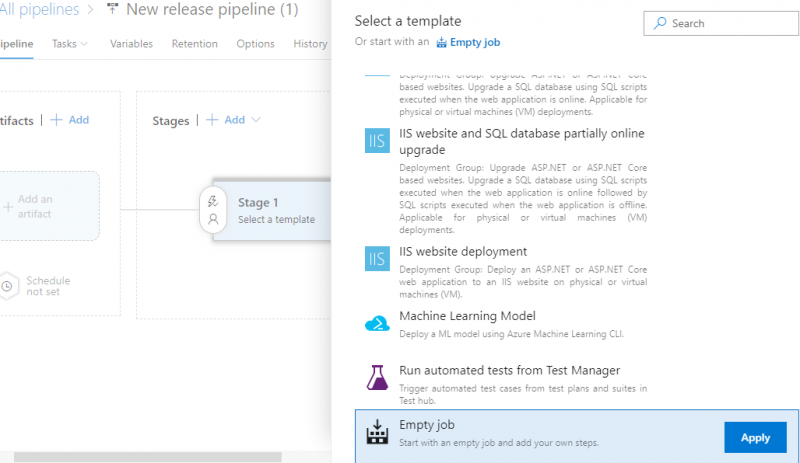
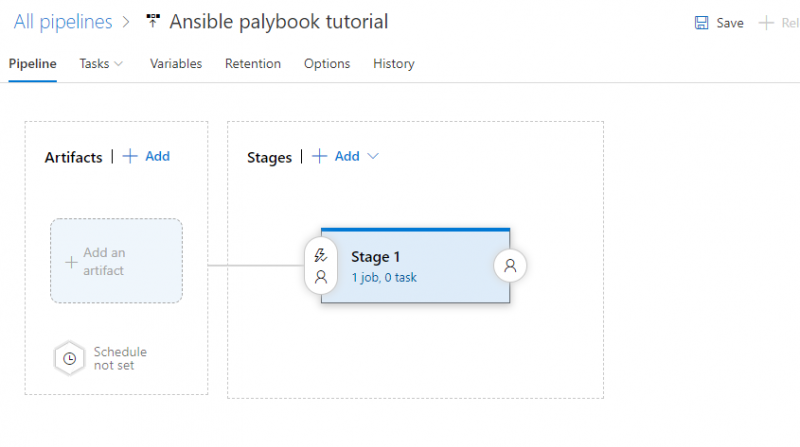
2) Add Artifacts in Release Pipeline Job
I am adding Azure DevOps in artifacts as I am using Azure repository to store our playbook and inventory file. I have already Pushed the inventory file and tutorial.yml playbook in my Azure repo branch ansible-tutorial.
Select your Project, Repo, and branch to add artifacts in your release pipeline.
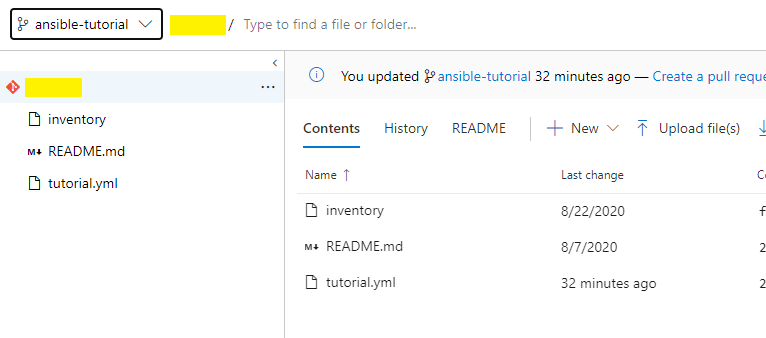
xxxxxxxxxx#tutorial.yml- hosts: "{{ host }}" tasks: - name: create a test file for ansible shell: touch /tmp/tutorail.yml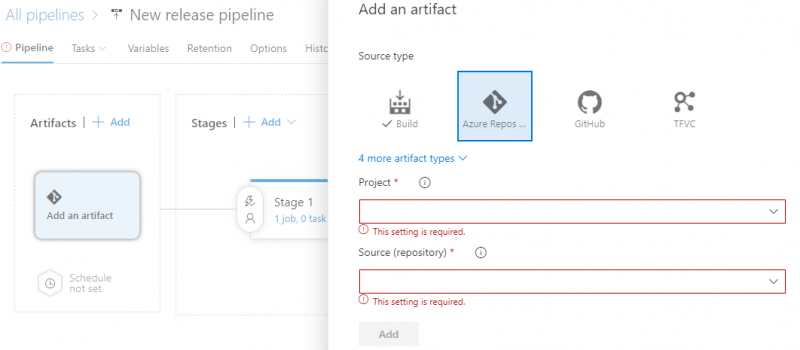
3) Upload and Configure Secure Key in Stage 1 for Ansible-Playbook Authentication
I am using the SSH key for authentication on my target machine. To pass the ssh key I will upload it using Download Secure file utility available.
Download Secure Utility: Is used for storing secure files in your release pipeline like ssh key, SSL certs, CA certs. During execution, files are downloaded in a temp folder and their path can be accessed by calling the reference variable( shown below). These files are deleted as the release job is completed.
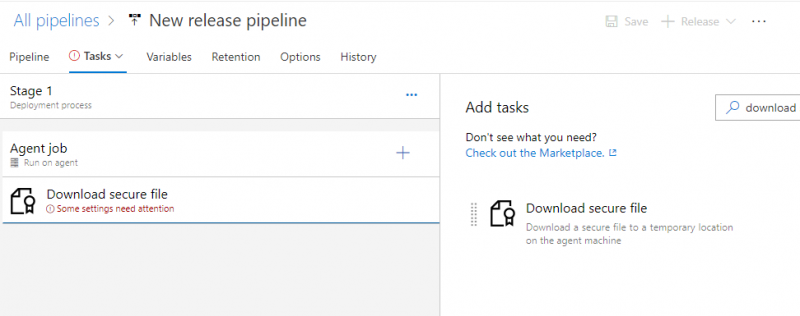
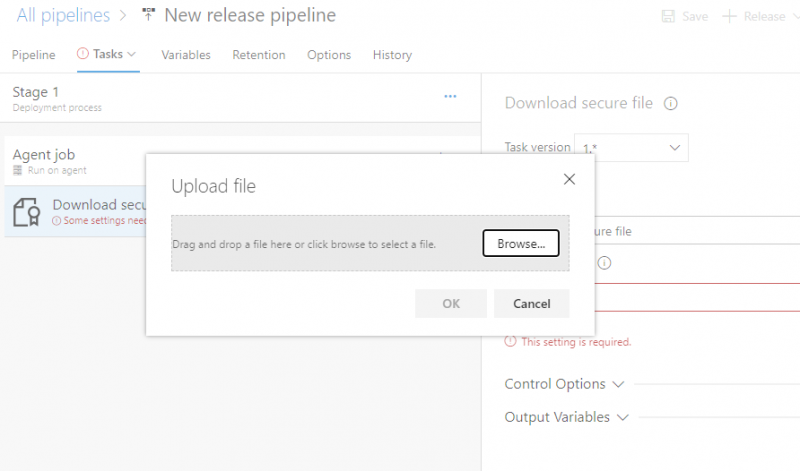
Enter the reference name as shown below. To access the file use variable.
$(<reference name>.secureFilePath)
Ex: $(pemKey.SecureFilePath)
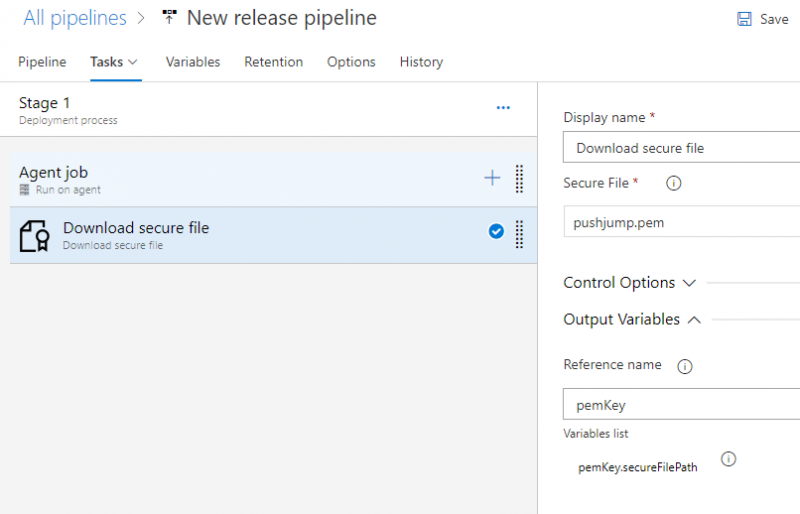
4) Change File Permission
We will add shell command-line utility to change the file permission to 400 before using it in the playbook.
I have used $(pemKey.secureFilePath) to access the SSH key.
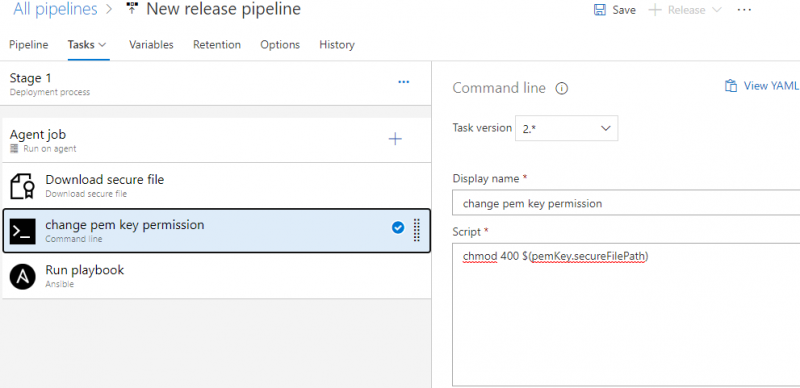
5) Add and Configure the Ansible Task
Add the Ansible task and enter the playbook path as shown below. For an inventory, location selects the file and select the file path as shown below.
Use additional parameters to pass a variable to Ansible playbook.
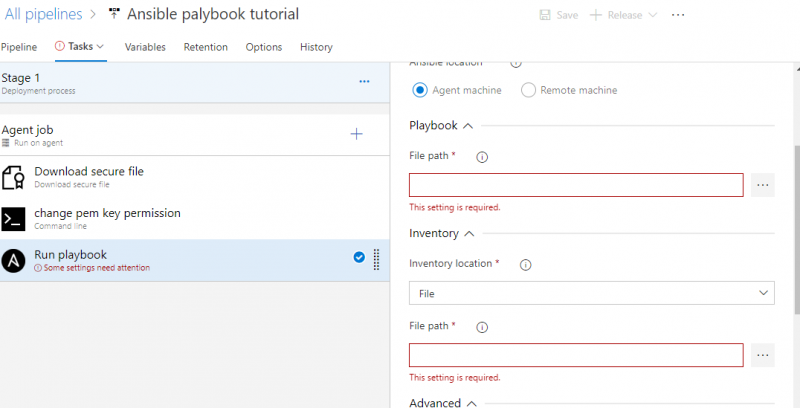
Use Additional parameters to pass variable and other command line parameters to playbook at run time.
To pass the path of ssh key i have used ansible_ssh_private_key_file=$(pemKey.secureFilePath)
Also, you can use variables ansible_ssh_common_args=’-o StrictHostKeyChecking=no’ to disable the host key checking in your Ansible playbook, if its failing due to host key verification error.
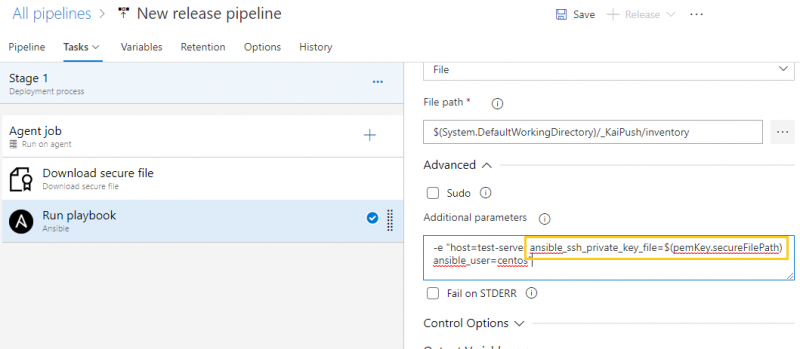
6) Save the Release Pipeline and Create a Release To Run the Playbook
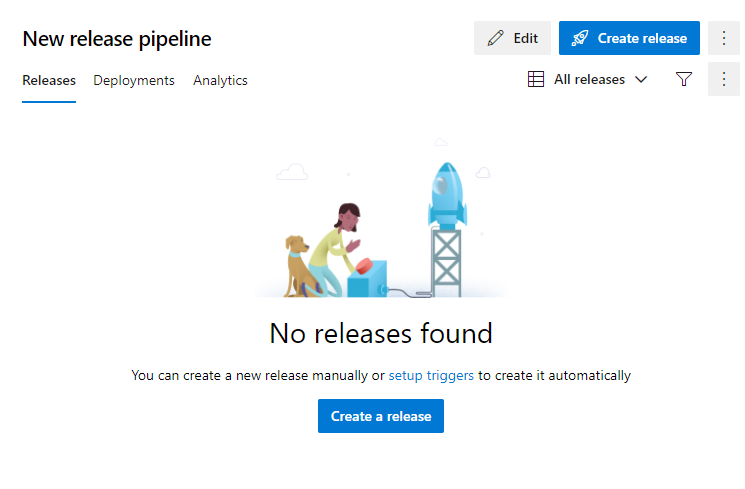
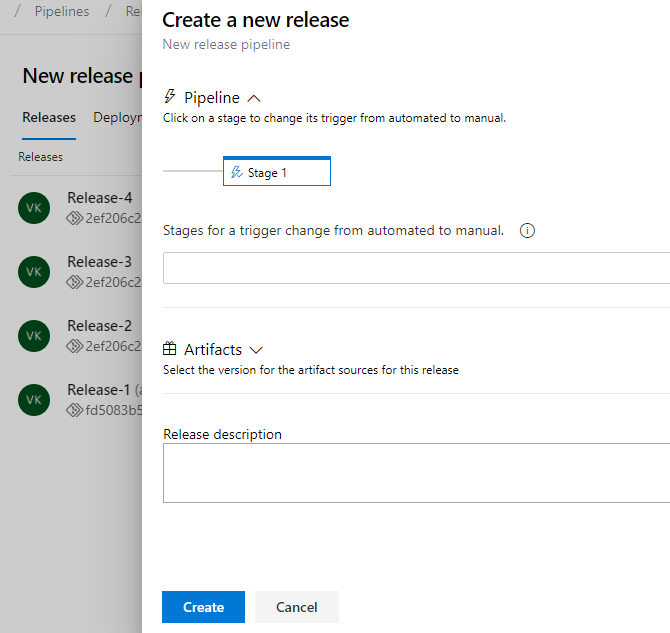
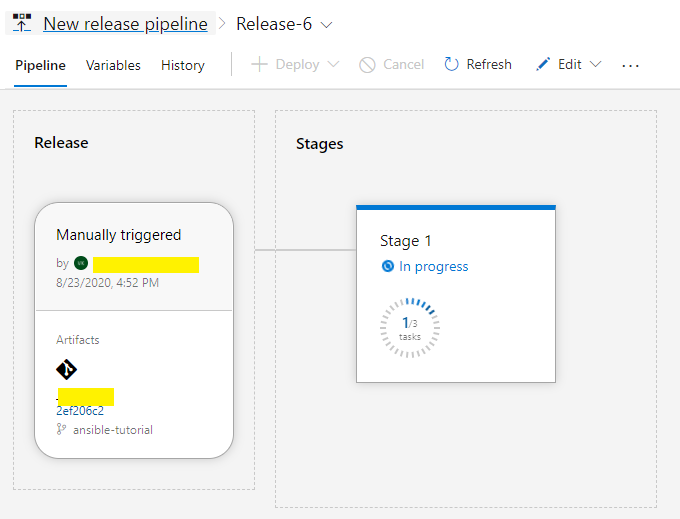
We can see our Release completed successfully.
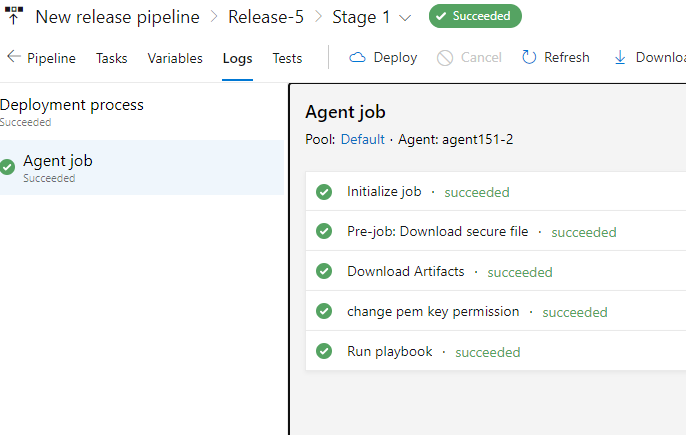
Summary
Ansible playbook ran successfully from Azure DevOps. If you want to use username and password instead of ssh key. You can pass the Linux creds using additional parameters using secrets variables so that the creds will be masked or you can also use a shell command-line utility to set creds in an environment variable and Ansible will read from there.
Comment (0)
Opinions expressed by DZone contributors are their own.

